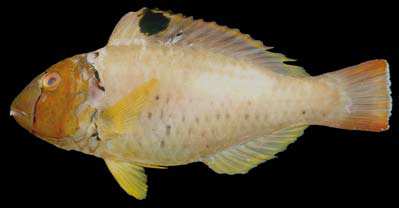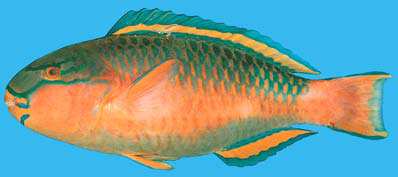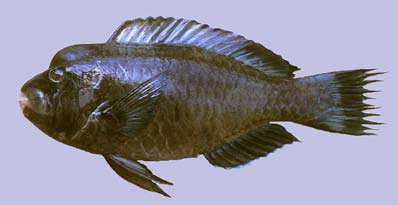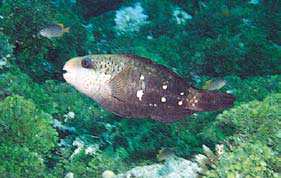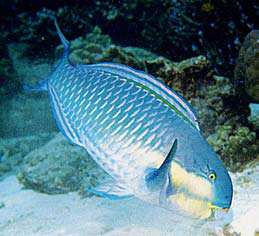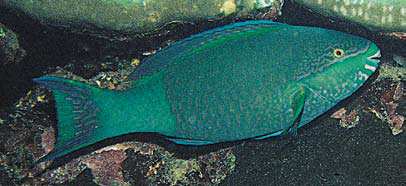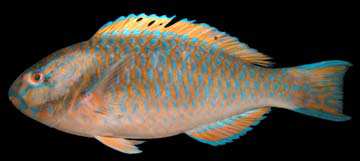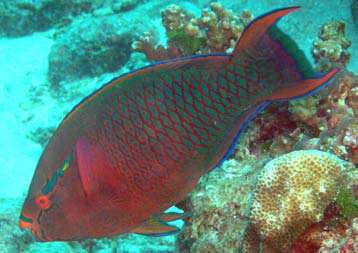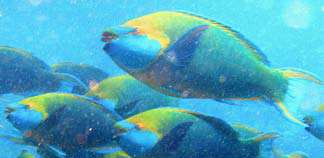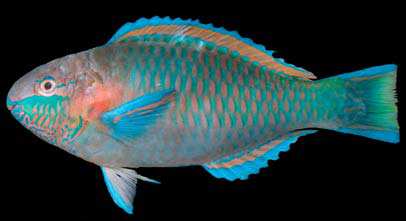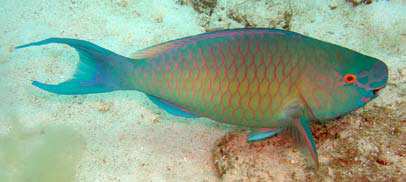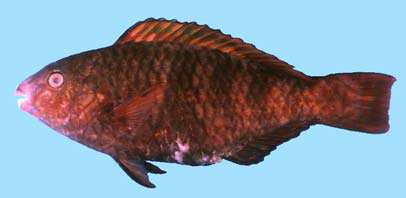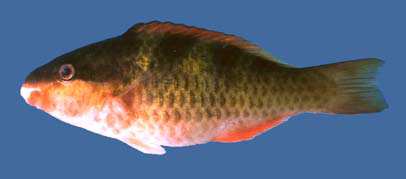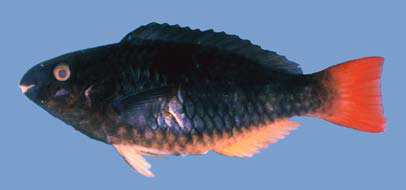SCARIDAE
Parrotfishes
By Ukkrit Satapoomin
|
Body oblong, moderately compressed (size to 120 cm). Head generally bluntly rounded anteriorly. Teeth in jaws usually fused to form a pair of beak-like plates in each jaw, but a few species have free, imbricate, incisor-like teeth; small, isolated, projecting teeth (canines) occur in some species on outer sides of upper jaw; pharyngeal dentition strong consisting of interdigitating paired upper pharyngeals with rows of elongate molariform teeth; these teeth bear against the elongate molariform teeth on the surface of the single lower pharyngeal bone. Dorsal fin continuous, with IX slender, flexible spines and 10 soft rays; anal fin with III flexible spines and 9 soft rays; pectoral fins with 2 unbranched rays and 11-14 branched rays; pelvic fins with I spine and 5 soft rays; caudal fin with 11 branched rays, varying from rounded to lunate with produced caudal fin lobes. Scales large, cycloid, usually 22-24 on lateral line; 1-4 rows of scales on cheek; 2-8 median predorsal scales. Color: most species very colorful; may exhibit striking sexual dichromatism. Most species are protogynous hermaphrodites (maturing first as females, then sexually transforming into males), this sexual transformation is usually accompanied by change in color phase. In species where 2 adult color phases are known the first is termed "initial phase" (IP), the second "terminal phase" (TP). Similar families occurring in the area. The beak-like plates of most scarids, in addition to features such as large smooth scales and often bright colors, usually preclude parrotfishes being confused with any other fish family. However, member of the genus Calotomus, in which the teeth are not fused, might be confused with some Labridae (wrasses), but in the latter family teeth are usually well separated in jaws and mouth is clearly protrusible. Remarks. Parrotfishes are most often found on or in vicinity of coral reefs, and usually most abundant in shallow waters to a depth of 30 m. Herbivorous, usually scraping algae from dead coral substrates. Bits of rock eaten with the algae are crushed into sand and ground with the algae to aid in digestion, making parrotfish some of the most important producers of sand on coral reefs. At night, some species rest enveloped in their mucoid secretion. |

|
|

